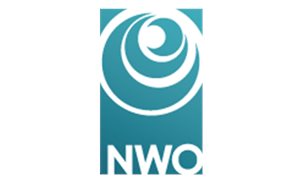12 September 2017
Finally, the authors found that participants who reported greater childhood maltreatment - primarily emotional abuse and neglect rather than physical and sexual abuse - exhibited increased amygdala activity during shock anticipation. This finding shows how early life stress may impact an individual’s perception of distant threats.

Guillen Fernandez
 Our response to a threat seem to depend on the balance of activity between two specific brain regions. This is suggested by neuroimaging data from two independent samples of adults in the Netherlands published in The Journal of Neuroscience on September 11. Researchers from Radboudumc and Radboud University provide the first proof that these two brain areas help to switch between responses to anticipated and real threats.
Our response to a threat seem to depend on the balance of activity between two specific brain regions. This is suggested by neuroimaging data from two independent samples of adults in the Netherlands published in The Journal of Neuroscience on September 11. Researchers from Radboudumc and Radboud University provide the first proof that these two brain areas help to switch between responses to anticipated and real threats.
Finally, the authors found that participants who reported greater childhood maltreatment - primarily emotional abuse and neglect rather than physical and sexual abuse - exhibited increased amygdala activity during shock anticipation. This finding shows how early life stress may impact an individual’s perception of distant threats.
Publication
How human amygdala and bed nucleus of the stria terminalis may drive distinct defensive responsesGuillen Fernandez
Related news items

Three Vici grants for Radboudumc researchers
20 February 2020 Christian Beckmann, Sander Leeuwenburgh and Annette Schenck each receive a 1.5 million euro Vici research grant from NWO. go to page
Judith Homberg appointed Professor of Translational Neuroscience
20 March 2019 Judith Homberg has been appointed Professor of Tanslational Neuroscience effective 1 February 2019. go to page
Ultrahigh-resolution MRI reveals structural brain differences in serotonin transporter knockout rats after sucrose and cocaine self-administration
20 February 2019 In Addiction Biology Peter Karel and Judith Homberg showed that rats lacking the serotonin transporter show increased cocaine, but unaltered sucrose, self-administration. go to page
Stress hormone may improve exposure therapy for patients suffering from PTSD
7 February 2019 Exposure therapy is effective in about half of the patients with PTSD. This percentage may possibly increase due to the targeted use of cortisol in the right patients. Benno Roozendaal received a TOP subsidy from ZonMw to investigate this. go to page
MRI scans reveal brain profile of concussions Over fifty Canadian rugby players followed
2 January 2019 Researchers from Radboudumc and Western University Canada performed MRI scans in more than fifty female rugby players. They show a deviant pattern in the brain after an acute concussion. go to page
